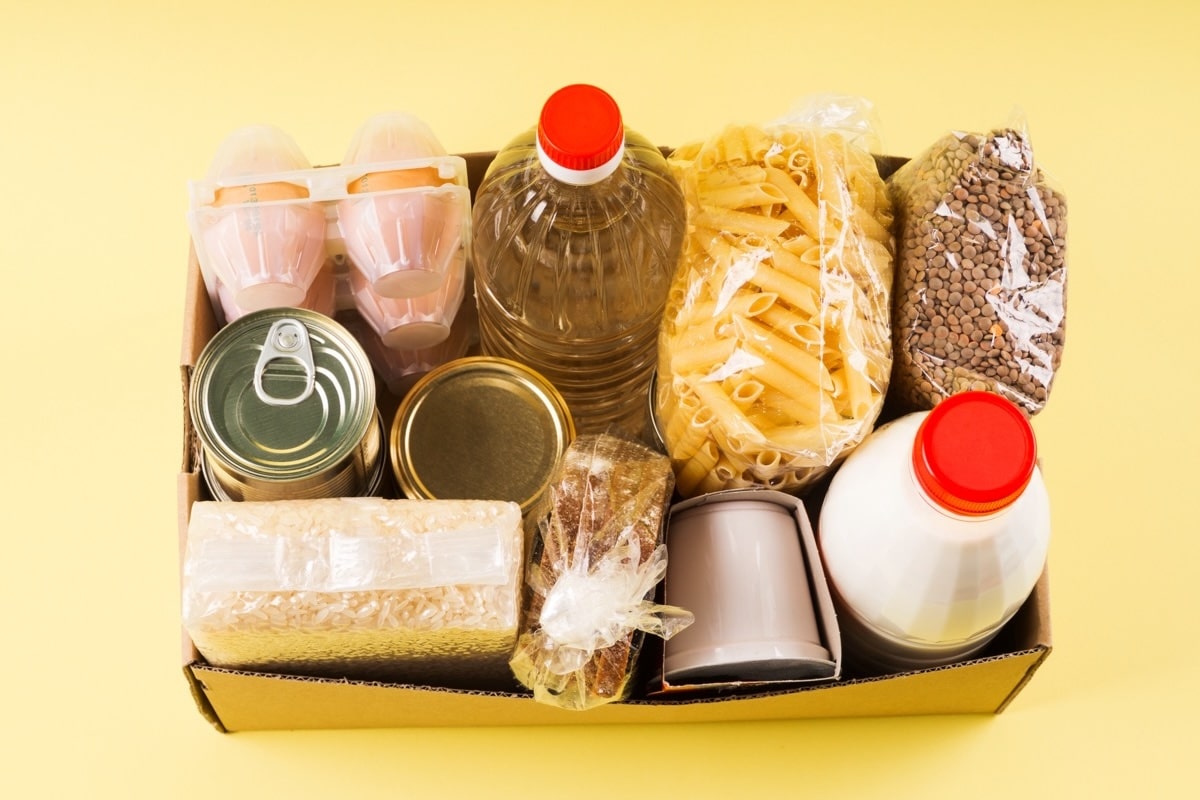With the advancement of technology, food distribution among the poorest of the poor has become “smarter” with smart ration cards. What those are and how to use them in different regions of India – here is a handy guide for all those concerned.

What is a Ration Card?
Ration cards are official documents distributed by governments to eligible households who have a right to receive essential food items and food supply subsidies under local laws.
Different ration cards exist in many countries under the initiative of national public food distribution systems. Oftentimes, the distribution of ration cards within the country is temporary, urged by the time-limited scarcity of certain essential goods. For instance, ration cards were introduced in many countries during wartime, deep economic crises, and other emergencies e.g. natural disasters which may affect the food supply.
How Do Smart Ration Cards Differ From Traditional Ones?
Smart ration cards are advanced digitised versions of legacy public distribution system ration cards. Using innovative technology and data management, they have the potential to improve the efficiency, transparency, and accountability of the subsidy and food distribution.
Unlike traditional paper ration cards, they are more convenient and eco-friendly, while also being less susceptible to damage or loss. Many types of smart ration cards are also supported by biometric authentication. Using fingerprint or iris scans to identify the intended beneficiaries enhances the system’s security and reduces the possibility of fraud or counterfeiting.
The risk of misuse is also decreasing with smart ration cards connected to a vast constantly updated database that enables better monitoring of cardholders and their transactions. Some smart ration cards may be linked to an app that shows cardholders their entitlements, recent transactions, distribution program updates, etc. Besides, the smart ration card database can be leveraged by various social welfare schemes and benefits, not only food distribution. This way, governments can better target subsidies to the most vulnerable population categories.
Countries That Have Introduced Smart Type of Ration Cards
Several countries in the world not only have public distribution systems that reduce hunger and poverty among vulnerable populations but also modernise them with smart ration cards.
- Egypt. In August 2023, local authorities launched the single government services card in Port Said City in collaboration with Visa. It allows citizens to receive different public services like food subsidies, universal health insurance, and e-payments using a single card. The initiative is to gradually expand across other jurisdictions and receive more functions in the near future.
- Indonesia. The government of Indonesia went from sending bags of rice to villages for manual distribution to digital debit cards specifically dedicated to food purchases. According to a study, this helped poor residents receive the full intended amount of food 81% of the time instead of 24%. Besides, switching to debit cards for food distribution reduced the overall poverty rate by 20%.
- Malaysia. The country unified various government services, including food subsidies, under the MyKad Multi-Purpose Smart Card Project.
- India. India runs the world’s largest food subsidy program, the Public Distribution System, providing affordable grains and access to daily meals to nearly 800 million citizens. To manage that, the government launched a technology-driven One Nation One Ration Card (ONORC) scheme that enables in-state and inter-state portability of ration cards. When it comes to smart ration cards, India has them linked to the nationwide Aadhaar system, providing unique identification based on biometric and demographic data.
Smart Ration Cards in India
In India, there are different types of ration cards based on the income category of the household. However, they are unified under a single One Nation One Ration Card (ONORC) scheme catering to the needs of interstate migrants along with the people settled in one state. Therefore, all states’ ration cards apply nationwide.
The smart ration card distribution happens according to the National Food Security Act (NFSA), 2013.
Before digitisation, many problems existed with the national food distribution system. Subsidised food supply and petroleum often appeared on the black market. Fake ration cards were created in the names of diseased people or duplicated. The introduction of smart ration cards with Aadhar integration helped tackle the issue of numerous ineligible and fraudulent ration cards.
At the same time, issues remain with equal access to interstate ONORC transactions. In some states like Delhi, the number is higher, while in destinations that attract millions of migrants (e.g. Maharashtra, Gujarat or Kerala), the adoption of portability cards is much lower than expected. Some of the reasons are the lack of awareness and information about ration card portability among migrants and officials, and a lack of clarity on allocation of stock for locals and migrants at FPS.
What Are the Different Types of Ration Cards in India?
At present, there are only two types of ration cards eligible for food subsidies under the NFSA program. However, there is one more ration card type that doesn’t give a right for food grain. This may seem tricky at first. People often wonder which kind of ration cards are for the poorest of the poor.
- Antodaya Anna Yojana (AAY) ration cards are issued to the households most in need of assistance. AAY households are entitled to 35 kilograms of food grain and 1 kg of subsidised sugar per month per family. These ration cards are intended for “the poorest of the poor”.
- Priority Households (PHH), on the other hand, receive only 5 kilograms of food grain per member monthly. The participants of this ration card scheme must meet the eligibility criteria set by their state government.
- Non-Priority Household (NPHH) ration card serves for identification only. These households do not meet the PHH eligibility criteria set by the government and are not entitled to any food grains.
What Are the Three Types of Ration Cards Existing Before NFSA
Before 2013, the division of ration cards in India was different. There existed three categories of eligible households under the Targeted Public Distribution System (TPDS).
- Above Poverty Line (APL) ration cards were issued to households living above the poverty line (as estimated by the Planning Commission). They received 15 kg of food grain (based on availability) per month.
- Below Poverty Line (BPL) ration cards – for households living below the poverty line. These households were eligible for 25–35 kg of food grain.
- Antyodaya Anna Yojana (AAY) ration cards for “the poorest of the poor” households have remained unchanged. These households received 35 kg of food grain even before the reform.
How Smart Ration Cards Work in India
Under the ONORC scheme, eligible beneficiaries can avail of ration benefits from any Fair Price Shop (FPS) in any part of the country through a single ration card.
Smart ration cards in the country have the Aadhaar integration to verify the identity of individuals and improve the efficiency and transparency of government food distribution programs.
The Aadhaar database provides each resident of India with a unique identification number. It includes biometric data such as fingerprints and iris scans, as well as basic demographic information like name, date of birth, and address. Therefore, even those households which are not eligible to receive food grain can use non-priority smart ration cards for identification purposes.
In 2021, the Civil Supplies Department started distributing ATM card-model PVC cards for ration card holders in India. These cards include the name of the ration card holder, bar code and photograph on the front side and income and household details on the back. Aadhaar-seeded ration cards can be used at electronic point of sale (ePOS) machines while accessing foodgrains at any fair-price shop (FPS) in the country.
One household can receive only one ration card. The names of all family members are included in the ration card. If an individual moves from a household to another city and gets a separate address, his/her name may be removed from the existing ration card of the family member, if needed.
Migrant workers staying away from their families can either fully or partially claim their ration from their current location, while their family members in their native place can claim the rest of the unused ration subsidy. The “Integrated Management of Public Distribution System” (IM-PDS) portal in combination with the Annavitran Portal enables the inter-state portability of ration cards.

Ration Card Eligibility Criteria
To be categorised as “the poorest of the poor” AAY Household, one must meet some of the following criteria:
- be homeless and have no shelter;
- be a legally released bonded labourer;
- be a manual scavenger;
- have a household headed by a minor, or with no literate adult above 25 years;
- households headed by a person of 60+ years of age with no assured means of subsistence or social support;
- landless households in rural areas deriving a major part of their income from manual casual labour;
- households headed by a widow or a single woman;
- households headed by disabled members and with no able-bodied adult members;
- households with residential vulnerabilities in urban areas;
- households which have no income from any source;
- all earning adult members in a household are daily wagers or irregular wagers or engaged in a vulnerable occupation like beggar/rag picker, etc.
The criteria for PHH ration cards may slightly differ in various states. Ration card eligibility is cross-checked with other related, Aadhaar-linked databases. The general requirement is that the applicants are citizens of India, officially residing in a given state.
How to Apply for a Smart Ration Card: Tamil Nadu Example
Each state government has its own unique application forms. They can be submitted either manually or online to obtain a ration card. An individual can get the application form from the respective state website or at the respective appointed offices/centres.
The applicants have to pay a basic minimum fee and submit the required documents along with the application.
Here is an example of how to apply for a ration card online in Tamil Nadu.
- Visit the official website of the Tamil Nadu Government Public Distribution System (PDS).
- On the webpage, you can find the link to the online application form. Fill the form with relevant personal details, city, district and locality. You’ll need a scanned photograph and residential address proof of the family head as well. The application form can also be downloaded at the National Government Services Portal to fill out.
- Besides the application form, the required documents include the most recent utility bills, tenancy agreement, allotment order if applicable, copy of the bank passbook, and other relevant proofs of eligibility.
- After submitting the form successfully, you will receive a reference number needed for you to check the status of your ration card application.
- You may later check the status of the ration card list on the Tamil Nadu Civil Supplies Corporation’s Official website.
One must also note that the general nationwide categories of smart ration cards may have specific regional subcategories in different states. For example, the Tamil Nadu Government has implemented a Universal Public Distribution System (UPDS) where no exclusion is made based on the income criteria. So, how many ration cards do they have in Tamil Nadu?
- PHH – households entitled to all commodities including sugar;
- PHH-AAY – households eligible for all commodities including 35Kgs of rice;
- NPHH – entitlement to all commodities including rice;
- NPHH-S – is a sugar option card, that includes all commodities except rice;
- NPHH-NC – offers no commodities entitlement.
We have previously reported that Microsoft launched a generative AI chatbot Jugalbandi, backed by the Indian government. It is designed for rural dwellers of India, offering insights into more than 170 government programs in 10 indigenous languages.










